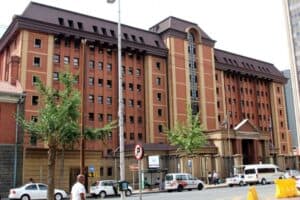Decisions were made for political rather than commercial reasons, grinding the turnaround plan to a halt.
South African Airways denies it abandoned a 2014 turnaround strategy which, according to experts, would have saved the ailing state entity now seeking more than R20 billion from Treasury.
It emerged this week SAA incurred a net loss of R5.7 billion in the last financial year after tumultuous financial and management battles led to the axing of chairperson Dudu Myeni last year.
The airline could have broken even this year, according to those familiar with the strategy, and shown a profit by 2020.
In 2016, after the long-term turnaround strategy (LTTS) adopted in 2014 was said to have been stalled, then acting SAA chief executive officer Nico Bezuidenhout initiated a much-publicised 90-day action plan to revive the LTTS. It included a partnership with aviation giant Emirates Airlines, which, according to airline expert Guy Leitch, would have raked in at least R2 billion.
He said the airline’s troubles emanated from the apparent abandonment of the LTTS.
But SAA spokesperson Tlali Tlali said the LTTS was still being implemented – with certain amendments.
“It has never been cancelled. When a strategy is adopted to be implemented over a period of time, it is based on certain assumptions,” said Tlali. “Those assumptions can be affected by market conditions or any other condition, and it becomes necessary to review and update that strategy.
“It’s a living document and is constantly being reviewed and updated.”
During the financial year ending in 2016, when the action plan was implemented, guided by the LTTS, SAA went from a R5.5 billion loss the previous year to a loss of just R374 million. That figure shot back up to R3.7 billion the next year before reaching R5.7 billion in the last financial year.
“The LTTS was not implemented simply because management did not have the will to do so,” said Leitch. “[Myeni] as chairperson was apparently largely undermining the initiatives of management to get the airline back to an even keel in terms of the building cost structure, the procurement process and overheads.”
Intervention into key areas such as the network route were needed, he added, but decisions were made for political, rather than commercial, reasons, grinding the LTTS to a halt and driving several key senior managers out – including Bezuidenhout and former CFO Wolf Meyer.
Leitch echoed several industry calls for SAA to go under business rescue. Should the airline receive another bailout, judicial scrutiny was needed, he said.
“The stakes are very high and they are now asking for R22 billion.
“They are betting R22 billion on the ability of the new [board] to turn this around.
“There needs to be some form of judicial oversight process over how this money will be managed … going under business rescue will do that.
“There are pitfalls to going under business rescue, but that can be aided by having gone through a thorough legal process before going into rescue.”
Leitch said privatisation was not an option for SAA. It was technically insolvent with its liabilities surpassing its assets by about R17 billion.
ALSO READ: SAA appoints key managers as part of turnaround strategy
For more news your way, follow The Citizen on Facebook and Twitter.






